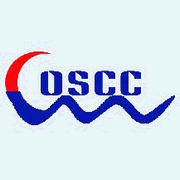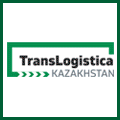GERMANY's Weiss Rohlig has opened a new project forwarding division in Taiwan to meet growing demand for outsize cargo solutions in its latest development to build a regional project cargo network across Asia.
The company said the expansion is being managed by the corporate project division in Vienna, headed by Franco Ravazzolo, who said: "We are looking to expand our footprint across the region as well as focusing on opportunities in the fast expanding intra Asia market. This development will also enhance the global co-operation between Gebruder Weiss and Rohlig Logistics."
The new business unit will be headed by Willie Tseng who spent more than 30 years with NYK Line. Mr Tseng has extensive experience of managing and costing a wide range of multimodal cargo projects in Taiwan.
"We are delighted that Willie Tseng has joined the Weiss Rohlig team to head up the project cargo department in Taiwan. He brings with him a wealth of experience in this dynamic sector of the industry," said Holger Stoelker, managing director, Weiss Rohlig, Taiwan.
Weiss Rohlig has a global network with more than 6,000 employees and 153 branches in 43 countries. In Asia, the joint venture of Gebruder Weiss and Rohlig Logistics is represented at a total of 37 locations in seven countries.
Shipping Gazette - Daily Shipping News
JAPAN's Yusen Logistics posted a 30.2 per cent year on year net profit decline in fiscal 2011 to US$31.2 million, despite a 92.2 per cent increase in revenue, which produced a 26.8 per cent rise in operating profit to $77.4 million.
Blaming weak US and European demand, the logistics arm of Japanese shipping giant NYK said another factor was a slow down in Asian economies, as well as the Japan's earthquake and tsunami and floods in Thailand.
"Although volumes increased in some regions temporarily, due to demand related to recovery from the twin natural disasters in Japan and heavy floods in Thailand, the international logistics market was generally stagnant," said Yusen of severely disrupted supply chains.
Shipping Gazette - Daily Shipping News
RUSSIA's Global Container Service Group (GCS), of Rostov on the Don, has begun taking delivery of 224 railway flatcars ordered from Moscow-based Transmashholding's Engels plant.
The flatcars are to be used on block trains operated by GCS intermodal subsidiary Ruscon, which moves 150 000 TEU a year on routes from the Black Sea port of Novorossiysk to European Russia, reports London's International Railway Gazette.
Traffic includes automotive components for factories in the Elabuga special economic zone operated by Ford, Isuzu, Voith Turbo, Saint-Gobain, Rockwool, Air Liquide and PD FibreGlass. GCS said it also plans to increase its fleet of long-term leased flatcars to more than 450 units.
Shipping Gazette - Daily Shipping News
AIR France-KLM recently announced an operating loss of EUR597 million (US$783 million) for the first quarter of 2012, down 82 per cent year on year, drawn on a six per cent increase in revenue of EUR5.6 billion.
The airline described the first quarter as "tough" in its statement due to tremendous increases in fuel and employee costs as well as the slowdown in airfreight activities.
During the first quarter, cargo traffic declined 6.1 per cent, capacity reduced two per cent and load factor dropped 2.9 points to 64.9 per cent. Revenues on cargo shipment shrank 3.3 per cent year on year to EUR744 million and the operating result was a negative EUR68 million.
Operating costs rose nine per cent and by six per cent without fuel expenditures. The fuel cost increased 17.9 per cent by EUR255 million to EUR1.68 billion. Also, increase in salary and rise in pension costs push employee costs up six per cent to EUR1.91 billion. This attributed to a negative EUR597 million in operating result.
Looking ahead, the airline reaffirms cost-cutting position. It expects the annual fuel bill to increase EUR1.1 billion and the first half results will be "below the level of last year." But it hopes the results will improve in second half due to the gains from its "Transformation 2015" programme, which has been implemented to drive the company to achieving sustainable growth through measures to reduce controllable costs by 20 per cent to restore an industry average, to refocus on customer service and to simplify the entire organisational structure.
Shipping Gazette - Daily Shipping News
UNITED Airlines has launched a daily service between its Washington hub at Dulles International Airport and Doha, Qatar via Dubai.
The extension of the existing Dubai service to Doha is the first of three new, previously announced United services from Washington Dulles. The airline has also introduced nonstop service between Dulles and Manchester, and between Dulles and Dublin on June 7.
"We are delighted to add Doha to United's global route network," said James Mueller, vice president Atlantic and Pacific sales. "Our customers in both the US and Qatar will benefit from increased opportunities and options with this new service."
United operates the Washington/Dulles-Dubai-Doha service with a Boeing 777 aircraft.
Shipping Gazette - Daily Shipping News
JAPAN's Yusen Logistics has announced it has opened a 297-square-metre medium-temperature bonded warehouse in the Narita Logistics Centre near the Narita Airport, in addition to the company's two similar facilities for frozen refrigerated warehousing.
To be operational later this month, this new facility features a temperature setting of between 20 and 30 degrees Celsius, and an additional eight power plugs for rechargeable temperature-controlled containers. Plus the existing power plugs, the Narita Logistics Centre is now equipped with a total of 12 power plugs, enabling the simultaneous delivery work of a large number of rechargeable temperature-controlled containers, said the company statement.
Shipping Gazette - Daily Shipping News
STX Offshore & Shipbuilding Co., Ltd. of South Korea will help Kazakhstan to construct a shipyard at the Caspian Sea and overhaul a shipyard, agency Novost-Kazakhstan reported citing the Press Service of Kazakhstan Engineering National Company.
On the sidelines of the KADEX-2012 international weaponry exhibition in Astana Kazakhstan Engineering and STX Offshore & Shipbuilding Co., Ltd. signed an MoU.
The sides intend to consider joint projects such as construction of a shipyard at the Caspian Sea shore and modernization of one of the current shipyards, involving transfer of South Korea’s shipbuilding technology. A special working group is to be launched to work out recommendations on possible projects.
Kazakhstan Engineering is fully owned by National Welfare Fund Samruk Kazyna, holding of this company comprises 25 defense industry facilities. Since April 2010, the Company has been managed by the Defense Ministry.
STX Offshore & Shipbuilding Co., Ltd. engages in the shipbuilding and ship repair business. It designs and builds product tankers, container ships, gas carriers, bulk carriers, LNG carriers, ultra large-sized container ships, VLCCs, VLOCs, cruise ships and ferries, and offshore plants. STX Offshore & Shipbuilding Co., Ltd. was founded in 1967 and is based in Jinhae, South Korea.
Central Asian News Service, en.ca-news.org
The MSC certified Scottish Pelagic Sustainability Group (SPSG) North Sea herring fishery has entered MSC re-assessment in order to maintain its certification beyond 2013. MSC fishery certificates last for five years and – for a fishery to maintain its certificate – it must be reassessed in time for the expiry of the original certificate.
Claire Pescod, UK Fisheries Outreach Manager for the MSC says, “This is great news from a key fishery in Northern Europe. The SPSG’s stalwart support for the MSC has been a real driving force for the organisation in the region, with the four SPSG fisheries in the MSC programme accounting for 98% of SPSG’s annual catches of around 220,000MT. This is great timing from the SPSG – coming so closely after the certification of the West of Scotland herring fishery – and they have allowed themselves plenty of time to get the fishery recertified for its 2013 deadline.”
SPSG Chairman, John Goodlad said: “Our decision to seek re-assessment of our North Sea herring fishery illustrates the ongoing commitment of SPSG to the MSC program. North Sea herring was the first fishery we had certified and our experience of certification has been such that there was never any question that we would not seek re-assessment of this important Scottish fishery.”
The SPSG North Sea herring fishery supplies key markets across Eastern and Northern Europe, Russia and former Soviet Republics with filleted frozen herring. Fishing takes place during summer months – starting in June.
The assessment will be carried out by independent certifier, Food Certification International. Anyone with a stake in the fishery is invited to take part. If you would like to be involved, please contact Martin Gill at This email address is being protected from spambots. You need JavaScript enabled to view it.
Source MSC
Accolades for German carrier from Air Cargo News and Hellmann
Lufthansa Cargo stood out once more as the best European cargo carrier at the “Cargo Airline of the Year Awards”. As in previous years, thousands of international forwarders again voted for the carrier as the best of Europe’s cargo airlines. At the Gala Awards night held in London, Thomas Egenolf, Director Italy & Malta, accepted the award on behalf of Lufthansa Cargo as well as additional accolade as best cargo carrier on Asia/Pacific routes.
The British Air Cargo Media Group has conferred the coveted awards for 29 years. “This year Lufthansa Cargo has had to contend not only with a general market slump – but also the damaging news of the introduction of a night-time ban at its busy Frankfurt hub. Undeterred, the German carrier has continued to outpace its rivals, particularly in Asia and Europe, stated Air Cargo News managing director Nigel Tomkins.“
Thomas Egenolf emphasised that the award was above all an incentive to continue convincing customers by delivering the topmost quality. At the London presentation ceremony, he reaffirmed that the air cargo industry is and remains a highly competitive business. “Staying up front in the industry is only possible with high quality products, an extensive network and excellent service. Those will remain our aims in the future.”
Lufthansa Cargo’s quality has also won recent acclaim from Hellmann Worldwide Logistics. Theglobal logistics provider presented its European Award to the Lufthansa airfreight subsidiary in Wiesbaden. Hellmann branches across Europe had evaluated cargo airlines on the basis of six criteria, on which Lufthansa Cargo outperformed its global competitors.
Source Lufthansa Cargo AG
The EU project ‘Amber Coast Logistics’ went down extremely well with representatives of the eastern European transport and logistics sector at the TransRussia Transport Exhibition. Considerable discrepancies in terms of infrastructure in the new and old EU member states and Russia represent a challenge for the project.
Moscow, 24-27 April: “There is still a lot of unused potential within the transport and logistics sector, above all in Russia and Belarus,” declared Sebastian Doderer, head of project development at Port of Hamburg Marketing (HHM). Port of Hamburg Marketing is a leading partner of the EU project ‘Amber Coast Logistics’ (ACL), which was presented for the first time to an international audience within the scope of the ‘TransRussia International Transport and Logistics Exhibition and Conference’, the largest transport and logistics trade fair in Russia. The aim of the project is to promote multi-modal transport connections and logistics centres in the southern and eastern regions of the Baltic Sea. ACL was a co-representative on a joint Port of Hamburg booth.
Infrastructure differential between East and West
Within the scope of the ‘Logistics and Supply Chain Management’ series of conferences at TransRussia, Doderer informed leading transport and logistics sector experts of planned Amber Coast Logistics activities. Many representatives of the eastern European transport and logistics sector emphasised the importance of developing the transport and logistics infrastructure in the Baltic region. Considerable discrepancies in terms of quality and availability are evident, especially between the new and old EU member states and Russia. This gap needs to be breached. The number of cross-border cooperative measures dedicated to, for example, the development of infrastructure, is insufficient and many areas suffer from an extremely low level of accessibility. Within the scope of the ‘Amber Coast Logistics’ project, these problems will be analysed and the commensurate solution proposals and strategies developed. As such, in cooperation with other companies, Maris Katranzi, a management board member at Riga Container Terminal GmbH – in turn a member of the ACL project partner Latvian Logistics Association – is planning to create intelligent transport solutions for regions with a low level of accessibility.
Three work packages to improve accessibility
A total of 20 project partners from Poland, Lithuania, Latvia, Denmark, Belarus and Germany are participating in the ‘Amber Coast Logistics’ initiative. Their aim is to develop multi-modal logistics centres around the Amber Coast region and its natural hinterlands, the Baltic States, Russia, Belarus and Ukraine. To achieve this goal, the partners are working jointly on three work packages: the ‘Flow of goods and institutional aspects’ package involves, amongst other things, analysing what influence laws and regulations have on transport organisations and flows. The action undertaken primarily serves to determine the current situation. A plan of action to promote multi-modal transport structures will be conceptualised within the ‘Sustainable and efficient transport concepts and multi-modal transport chains’ work package. The ‘Regional logistics integration’ work package ultimately builds on the outcome of the previous two packages, effectively putting the results of the conceptual phase into practice.
Source PORT OF HAMBURG
Dry bulk and liquid cargo handling capacities will be increased to a combined 20 million tons per year; multi-purpose quay will be extended 1,200 meters as the “Salalah Hub” establishes itself in the region.
Salalah, Oman- Oman’s Ministry of Transport and Communications has awarded a commercial bid representing investment of OMR 55 million ($143 million USD) to more than double the Port of Salalah’s general cargo handling capacity. The project will increase dry bulk cargo handling capacity to 20 million tons and liquid cargo to over six million tons annually. The current annual general cargo handling capacity is 5.5 million tons.
“The general cargo business has been growing rapidly here, and this new expansion will play a significant role in serving the continued development of businesses in Oman and the surrounding region” stated Port of Salalah’s CEO, Peter Ford.
The Port of Salalah, astride the major global shipping lane between Europe and Asia on the Gulf of Oman in the Arabian Sea, holds a strategic position for transit cargoes to the upper Arabian Gulf, Indian sub-continent, Red Sea and East African markets. Salalah was the 2rd-largest containerport in the Middle East Region in 2011 with volume of 3.2 million TEUs. In its 14th year of operation, the Port of Salalah will handle its 30 millionth TEU this month with the first eastbound call of the G6 Far East/Europe string.
“We are very grateful to the government of Oman and particularly the Ministry of Transport and Communication for their vision, insight and support in helping the Port of Salalah achieve this tremendous milestone of 30 million TEUs” said APM Terminals Africa-Middle East Regional CEO Peder Sondergaard.
The Port of Salalah is part of the APM Terminals Global Port, Terminal and Inland Services Network, with APM Terminals holding a 30% share in the Port, 20% held by the Government of Oman, and the remaining 50% held by institutional and private investors.
The planned expansion of the general cargo terminal includes the construction of an additional 1,200 meters of multi-purpose berth with 18 meter draft and liquid commodity loading facilities. The new liquids terminal will significantly expand Salalah’s role in handling such key industrial commodities as fuel, methanol, Monoethylene glycol, and caustic soda. Major dry bulk commodities handled at Salalah include limestone, gypsum and cement as well as plastics.
“We are committed to making the resources available to enable Salalah to assume a major role as a regional hub for liquid and general bulk cargoes, in addition to containers, as we meet the growing demands for increased economic activity in the Dhofar region and the growing international investment projects in Oman” said Mr. Ford.
Source Port of Salalah
KOREAN AIR has posted a first quarter year-on-year operating loss of KRW114.7 billion (US$101.4 million) drawn revenues of KRW2.88 trillion, which increased 5.9 per cent.
The loss was attributed to the rising price of jet fuel."Compared to the same period last year, there was increased traffic across all routes, including Oceania (up 23 per cent), south east Asia (up 18 per cent) and China (up 14 per cent). While Korea outbound traffic maintained at last year's level, overseas outbound reported an increase of 16 per cent," said the statement accompanying the results.
Cargo volume fell 9.6 per cent to 2,059 million freight tonne kilometres (FTK) as it decreaseD 12 per cent in domestic service and nine per cent. A decrease in outbound cargo was also reported.
"As many China-based airlines have been drastically stepping up cargo capacity, the airline is facing increasingly intense competition in China market," said a company statement accompanying the results.
"As global economy recovers, Korea outbound is expected to show gradual increase. Looking onward, the airline strives to stabilise the business against high and surging fuel price through capacity control and fleet redeployment," said the statement.
In addition, with the introduction of new routes (Incheon-Gatwick and Incheon-Nairobi) and stepping up frequency on selected routes, such as Incheon-Ulaanbaatar, Incheon-Danang, Incheon-Tianjin, Incheon-Vancouver, Busan-Beijing and etc, the airline sees potential growth in passenger traffic.
With the Free Trade Agreement between US and Korea and London Olympics, the outlook for potential growth in cargo traffic in the remaining quarters of the year remains positive, said the statement. "The airline will also strengthen profitability through route operation plan, and will continue to seek sustainable growth in the existing network as well as expanding into new markets.
Source Shipping Gazette - Daily Shipping News
UPS PILOTS have petitioned the US Court of Appeals against the Federal Aviation Administration's (FAA) exemption for cargo pilots from new rules stipulating passenger pilot rest requirements.
The cargo pilots said the FAA decision was based on wrong "cost-benefit" analysis that treats cargo differently from passenger operations under the new rules.
The court has ordered the FAA to respond by May 24.
Independent Pilots Association (IPA) lawyer William Trent said he hoped the court would "order the FAA to reconsider the inclusion of cargo operation rules consistent with its mandate from Congress and laws requiring adequate notice and opportunity for public comment.
"The FAA acted contrary to Congress' mandate when the agency published new pilot duty and rest rules in December excluding a vast and growing segment of US commercial aviation - cargo," said Mr Trend.
"Congress specifically directed the FAA to address the problem of pilot fatigue by issuing new rules based on the best available science.
"The FAA initially agreed, stating that the old rules 'are inadequate to guard against fatigue and present an unacceptable risk to the public.' Yet the same agency, under intense cargo industry pressure, abruptly made a 180 degree turn and left cargo pilots under the same set of flawed rules that the FAA and Congress found lacking."
Source Shipping Gazette - Daily Shipping News
DUTCH quick delivery company TNT Express, being taken over by UPS, says it has experienced poor conditions in Europe, and a continued weakness on the Asia-Europe trade lane.
TNT Express' Asian operations, as a whole, performed well, supported by a good performance in Australia and on-plan performance for its domestic services in China, reports the UK' s Transport Intelligence. Its other previous problem area, Brazil, was also strengthened.
The company's Europe, Middle East and Africa (EMEA) division saw first quarter revenues fall 0.5 per cent to EUR1.1 billion (US$1.4 billion) year on year. Average kilorammes per day increased for international economy, but declined for both domestic and international express.
Asia Pacific revenues increased 2.6 per cent to EUR430 million and Americas revenues by 5.4 per cent to EUR118 million. EMEA profits plunged 34 per cent to EUR68 million as a result of negative yield and cost inflation. Although Asia Pacific remained in loss at EUR7 million, it improved marginally. The Americas' losses were reduced to EUR23 million from EUR152 million in the same quarter in 2011.
Said TNT chief executive Marie-Christine Lombard: "As announced at the beginning of the year, the first quarter of 2012 has been challenging, given the ongoing sluggish business environment. In Europe, cost savings and commercial initiatives are being pursued to mitigate revenue pressure. Profitability in Asia Pacific improved, despite weak inter-continental demand. Americas also improved, with better results in Brazil."
Management also stated that in the short term these weak conditions were likely to persist.
Source Shipping Gazette - Daily Shipping News
According to the data of Main Dispatcher Service of the port 2.3 mil tones of cargoes were handled in April 2012, and 9.02 mil tones in total during 4 months of 2012. Specialty of the first 4 months of 2012 is stable growth of dry cargoes handling.By the end of April this rate amounted 5.9 mil tones, which is 1.1 mil tones more (+23.3%) than in January-April 2011. It became possible due to increase of handling of grain - 2.03 mil tones (+1.5 mil tones compared to January-April 2011) and ferrous materials – 1.5 mil tones (+223.7 thousand tones compared to January-April 2011).
Source The port of Odessa press-service
The magazine SEA has been published since 1935
International business magazine JŪRA MOPE SEA has been published since 1999
The first magazine in Eurasia in the four languages: English, Chinese, Russian and Lithuanian
|
|




.jpg)






